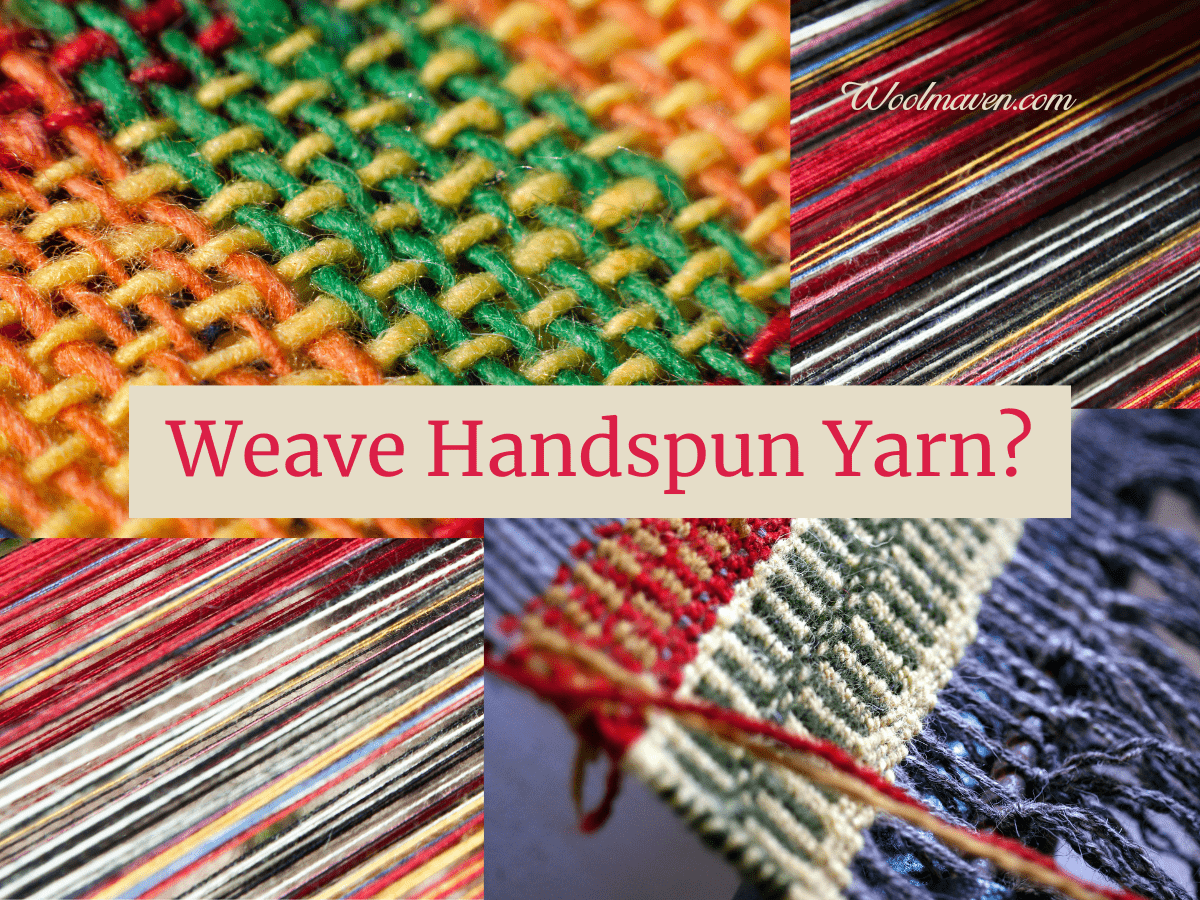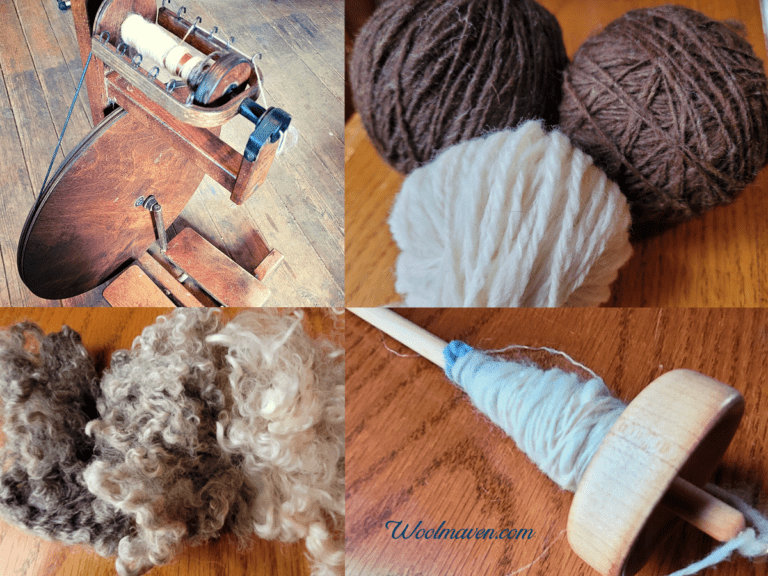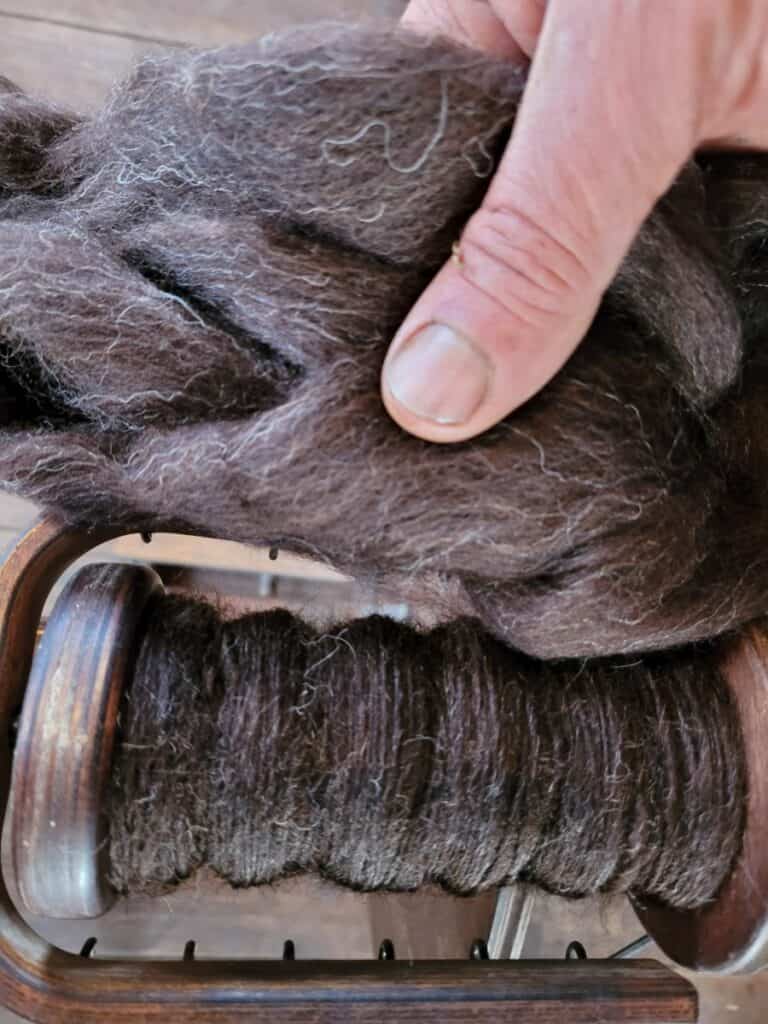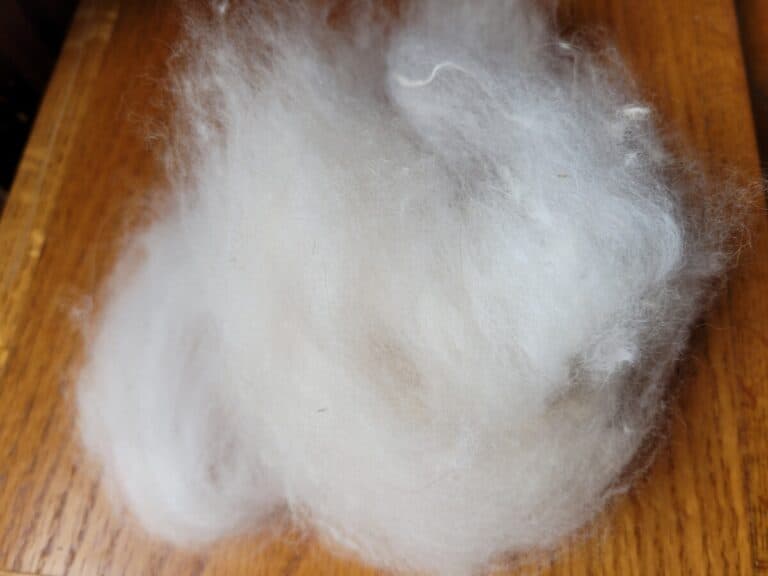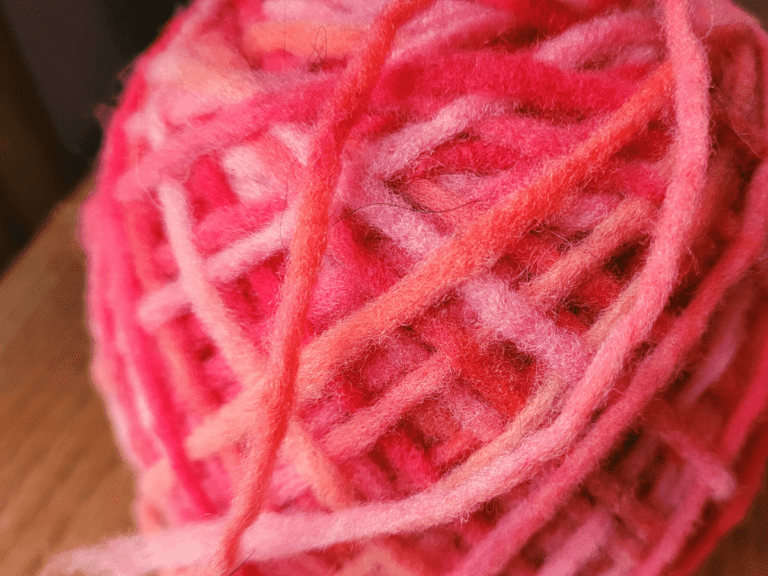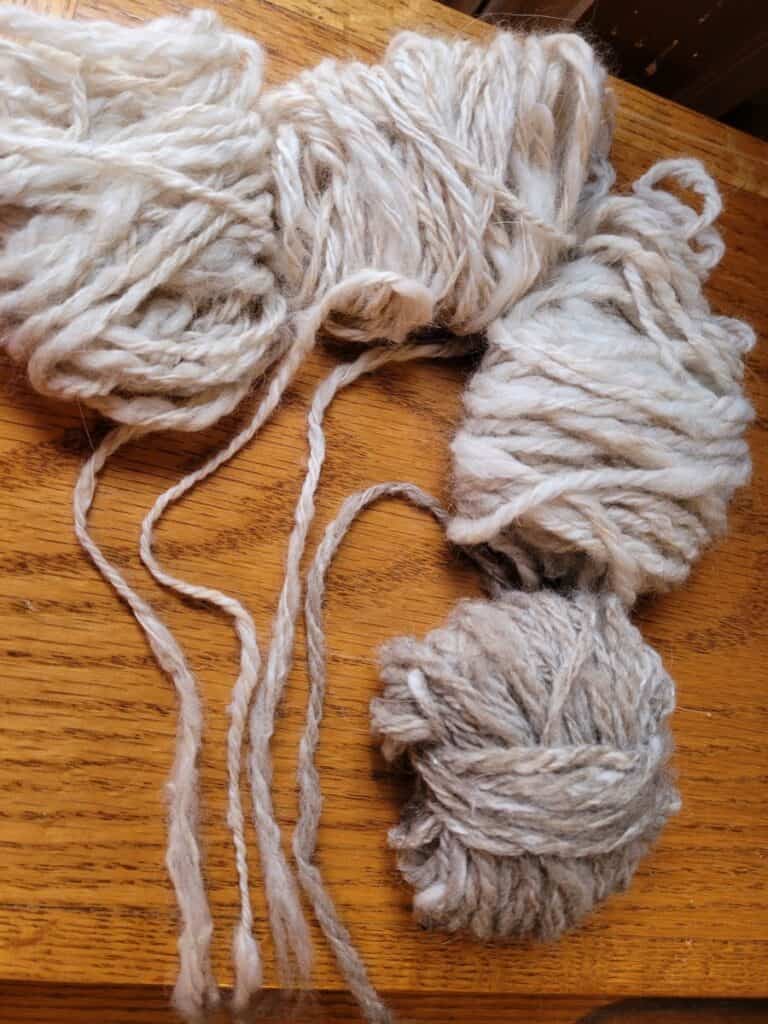Can You Weave With Your Own Handspun Yarn?
Handspinners are always looking for new project that uses handspun yarn. Of course, there’s knitting and crochet but what about weaving with it? Can handspun yarn be used in weaving?
You can weave with handspun yarn as long as the yarn used for the warp has tensile strength and is smooth and consistent.
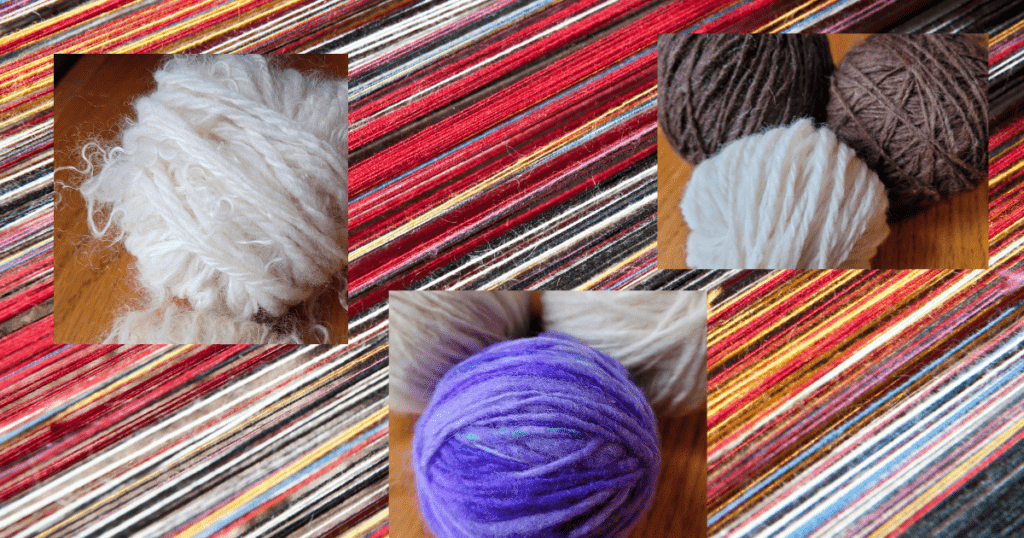
7 Best Places To Get Wool For Handspinning gives you a few ideas on where to source your project fiber!
You can weave with handspun yarn
You certainly can weave with your own handspun yarn! However, there are a few things to keep in mind to get the resulting fabric you are hoping for.
You can weave with handspun yarn as long as you:
- can spin a yarn with reasonable tensile strength
- are willing to accept potential variations in yarn due to being handspun
- are willing to adjust your spinning (twist, fiber, drafting, etc.) to make different yarns for the warp and weft, if needed
The yarn made for the weft will be a bit different than the yarn you will make for the warp, but both are doable, especially with a little planning.
Of course, as with most yarncraft, you can really do whatever you want, whenever you want, it’s more a matter of what you’ll get compared to what you were hoping for.
This is one of the things that I love about spinning my own yarn, if I can think it up, I can give it a shot and see what happens. The same goes for you and your spinning!
I recently started using a peg loom and I have found that I can put just about anything in as warp and it turns out just fine, even yarns that are uneven or smaller amounts of something, like a leftover section.
I purchased crochet thread for the weft, since with a peg loom the weft does not show, except as tassels, and to get more weaving done with my handspun, but you could use handspun for weft here as well.
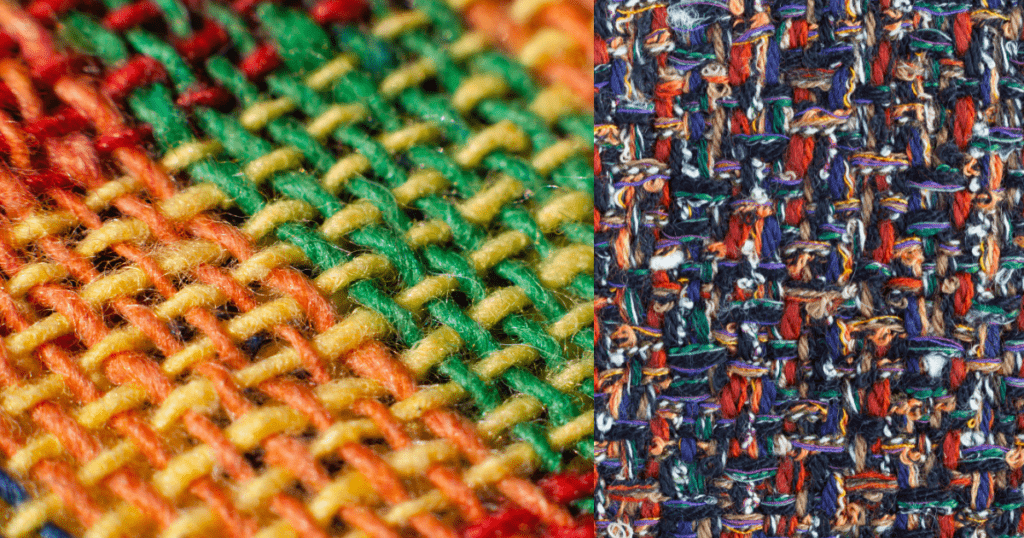
Weave with singles
You can weave with single spun yarn. The advantage of single spun is that if you can spin a reasonably even yarn, you can make a nice warp or weft, for that matter for your loom.
The potential downside of singles is that any problem in the spinning sits by itself, with out any help from a sister ply or two running alongside.
This means that thin spots or weak spots will not be reinforced but left to stand on their own under the normal pressures of weaving.
Weave with plied yarn
You can also weave with plied yarn, the advantage of the ply, of course, being more strength in the length of the yarn, but it will also fill the space differently, depending upon which ply you use.
While there is no right or wrong here, it’s more about what you want in your finished project, be sure to think about if you want a rounder yarn (3 ply) or a more oval shaped one (2 ply).
A two ply yarn is more the norm for weaving and will have a flatness to it along with the added strength of the plying. If flat is the main thing you want from your fabric, go with a two ply.
A three ply (less of a popular choice) is a fuller yarn, since it it more of a circle, and will stand up or poof out more.
11 Ways To Ply Handspun Yarn gives you more details on your plying options and why you would want to ply or not!
Yarn for warp
Normally, warp the strong base of the weave and is more consistent, evenly spun yarn. The reason that the warp needs to be consistent is that any bumps will catch as you weave.
Generally, the warp is the vertical yarn on the loom and the weft is the horizontally oriented yarn. Triangle and circular looms operate a bit differently, but for most looms, this is the case.
Warp yarns are run the length of a finished piece and the ends of the warp are the yarn that you see tied into tassels on the finished project.
Warp color affects fabric design
It is also important to remember that the warp is the foundation of your design, color wise.
Warp can play just as important of a role in color and design in weaving as the weft, especially if you are doing a simple weave.
In a plain weave, half the color you will see is from the warp strands, so you’ll need to figure out your colors before you spin your warp, so you’ll get the design you are hoping for.
I mention the color of warp because I had always thought of warp as a boring base, almost like the have to do part to get set up for the fun part of weaving, but not so!
Warp yarn color choice is an integral part of your weaving design, as a beginner this is just easy to overlook.
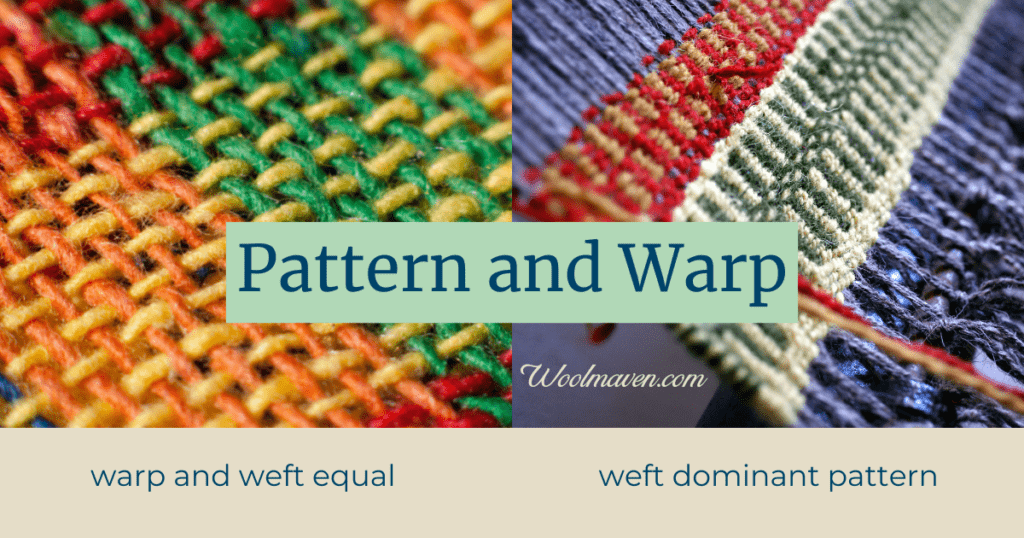
Some yarn is not suitable for warp
Yarns that should not be used for warp are yarns that are:
- overly elastic
- have thin spots
- have thick spots
- are made from short fibers, which are less likely to have the tensile strength needed
Any of these yarns could be used for weft, but each are problematic for warp.
As you get experience weaving, you can take some risks and work with unusual warp choices and see what you get, as a beginner it’s best to stick with the basics before experimenting too much.
Yarn for weft
Weft is the horizontal yarn on the loom, which is put on after all of the weft (the vertical base yarn) is already in place.
The weft can be plain or fancy, this is where you can really do some neat things with your weaving and see what shakes out.
You have a bit more leeway for weft than warp, since there is less stress put on the warp during weaving and the weft has more room for individuality or differences in the yarn than the warp.
You have more options for weft yarn
Weft is where you would add anything really neat or that you are using to spice up your finished project.
I used the phrase “spice up” on purpose. Use novelty yarns like you would add spice to food, meaning don’t go crazy with it, at least, for your first few designs!
Use handspun and purchased yarn in your weaving
You could weave with 100% spun by you yarns, some of yours and some purchased handspun or buy some commercial yarn to use with your handspun, whatever suits you and your project.
For example: if you feel like you don’t make a satisfactory warp or just do not like spinning warp, there is no reason you couldn’t buy warp yarn and use your handspun for the weft.
The opposite is true, as well.
Remember, this is your project to make as you please and, as long as you cover a few basics, the only limit is your imagination!
Using novelty yarn in weaving
This is where things get exciting, you can do just about anything you want to in weaving with novelty yarns, as long as you keep in mind the integrity of the final project.
You don’t want your beautiful work falling apart or being an out of control disaster because you went heavy on cool and skipped over that pesky, boring stuff about structural needs.
Medieval Threads: Tips for Spinning and Weaving has an interesting article on using singles in weaving, which was normal for that time.

